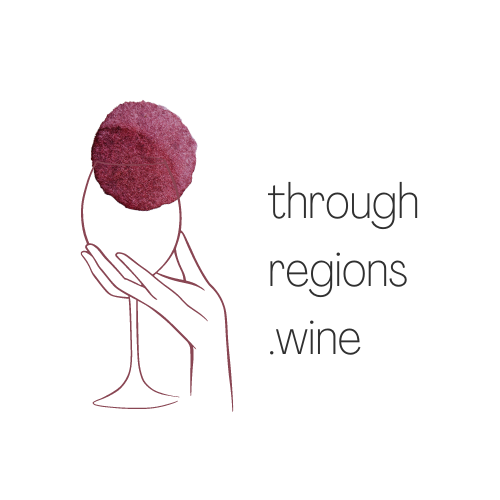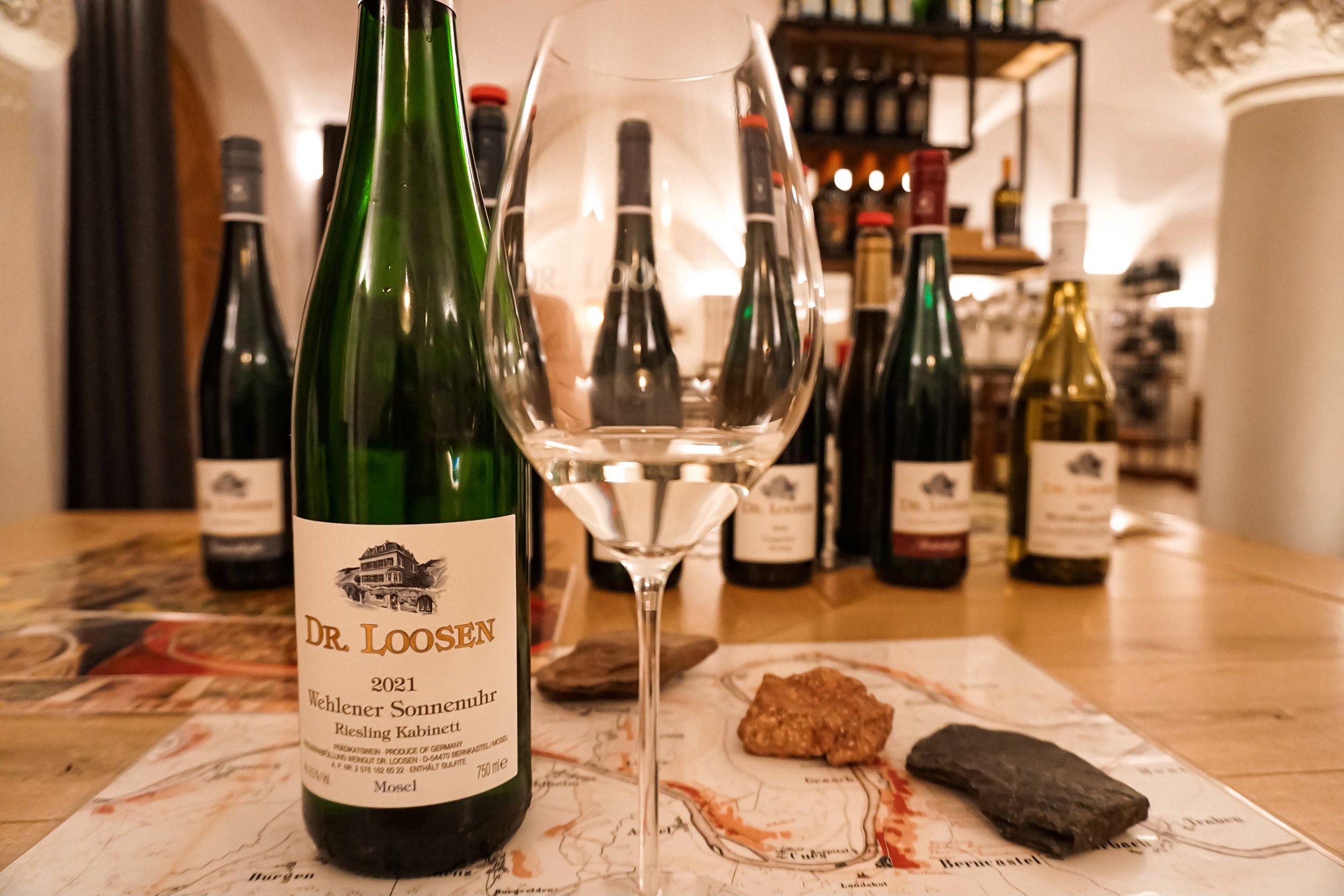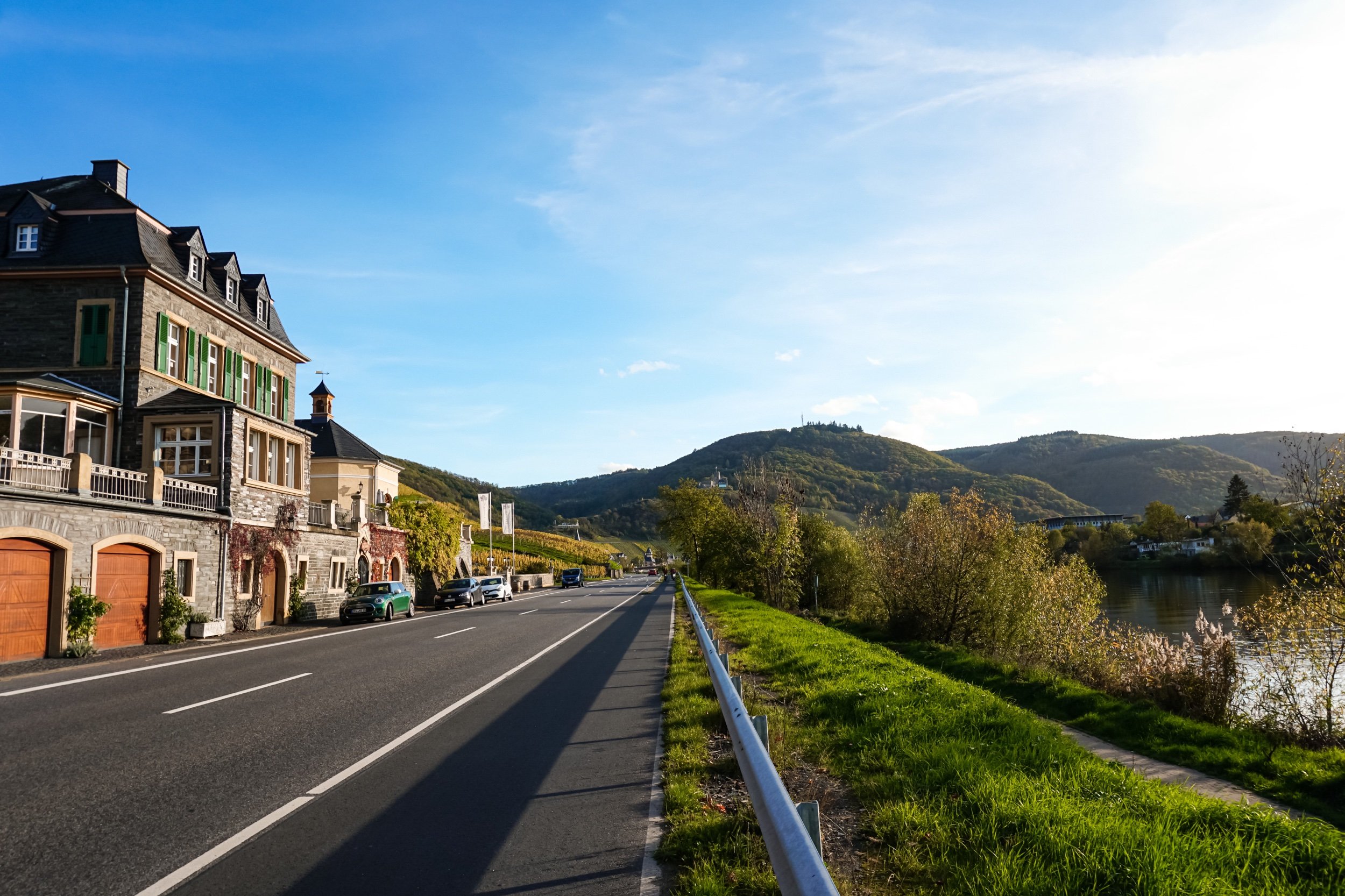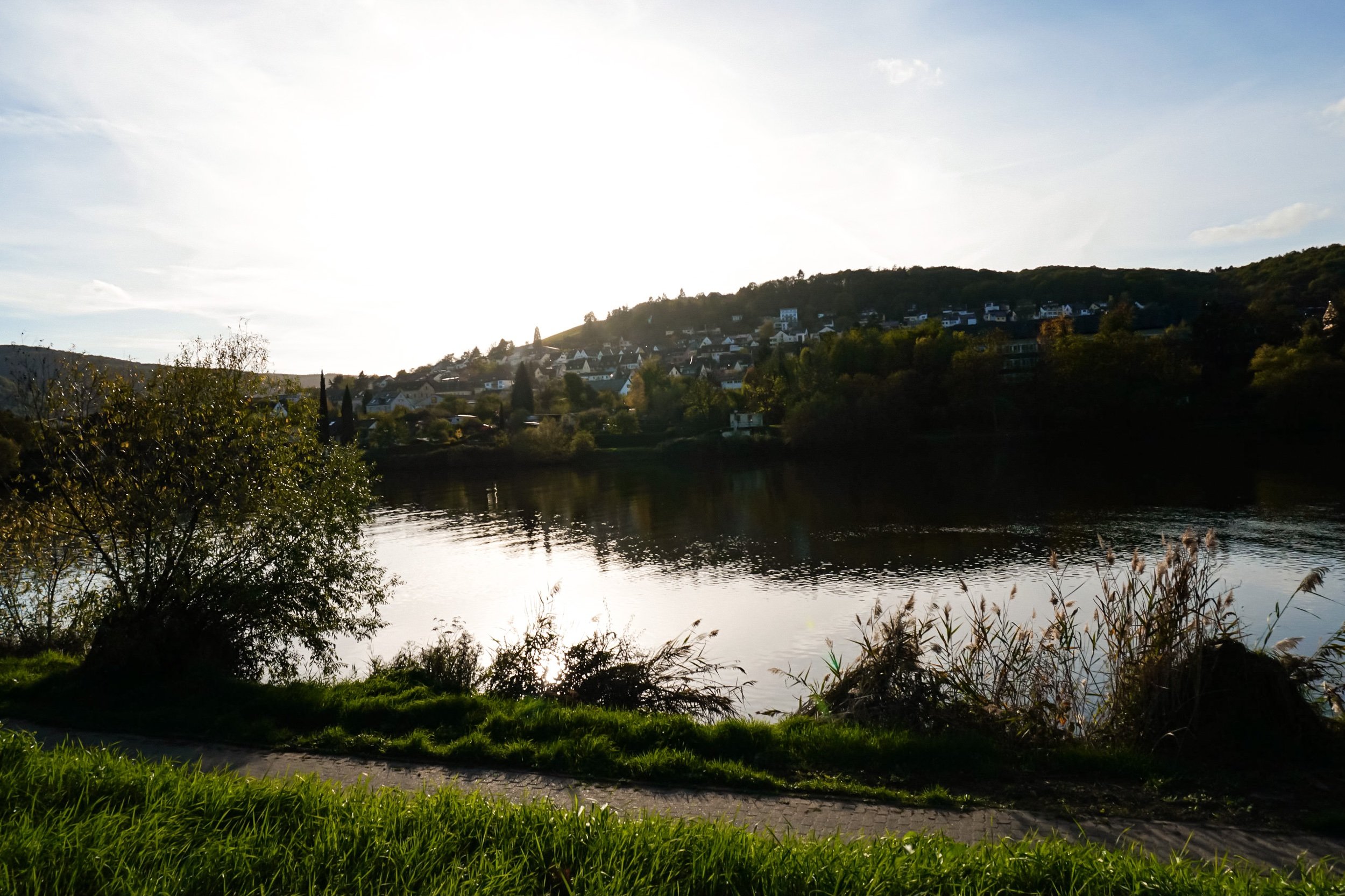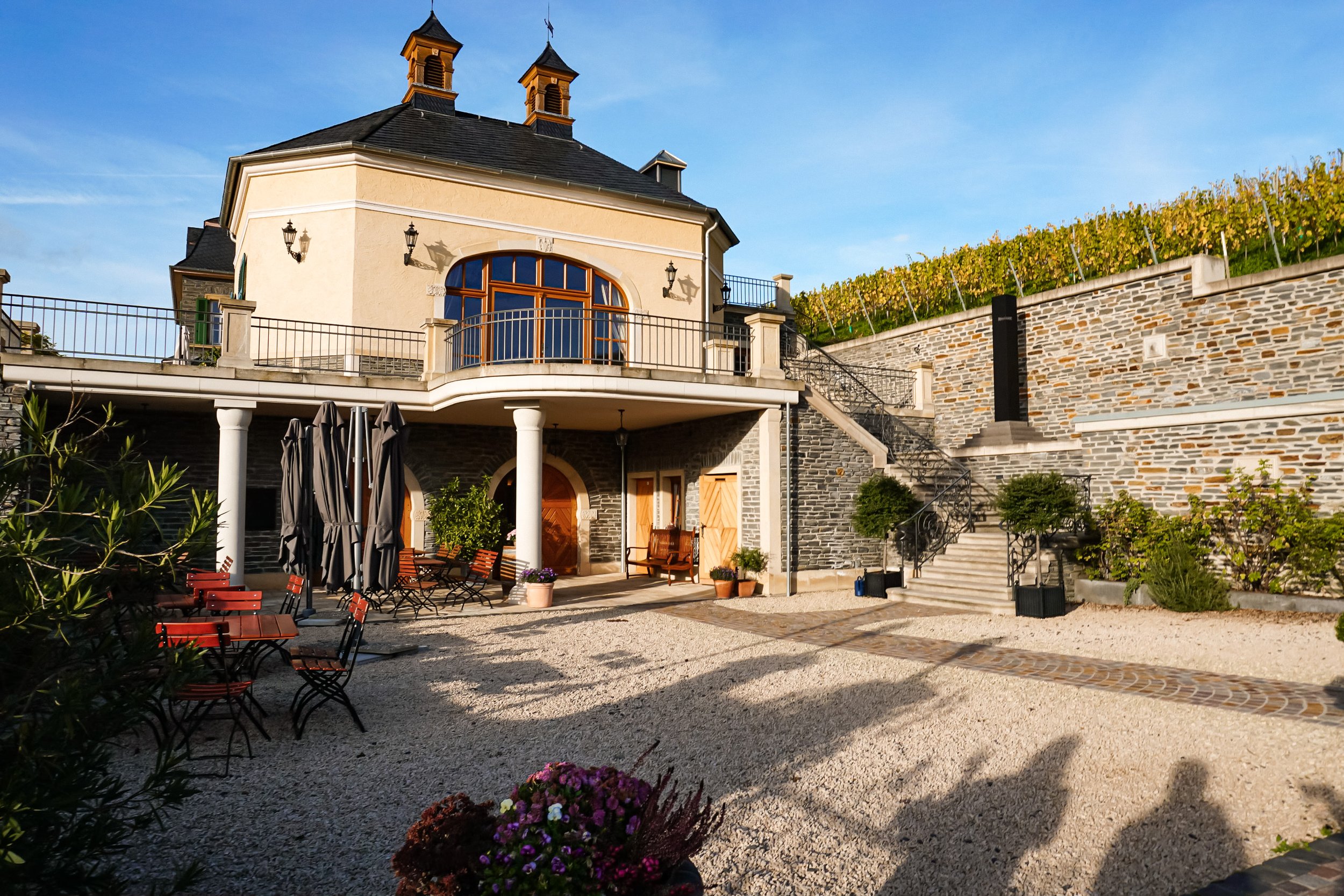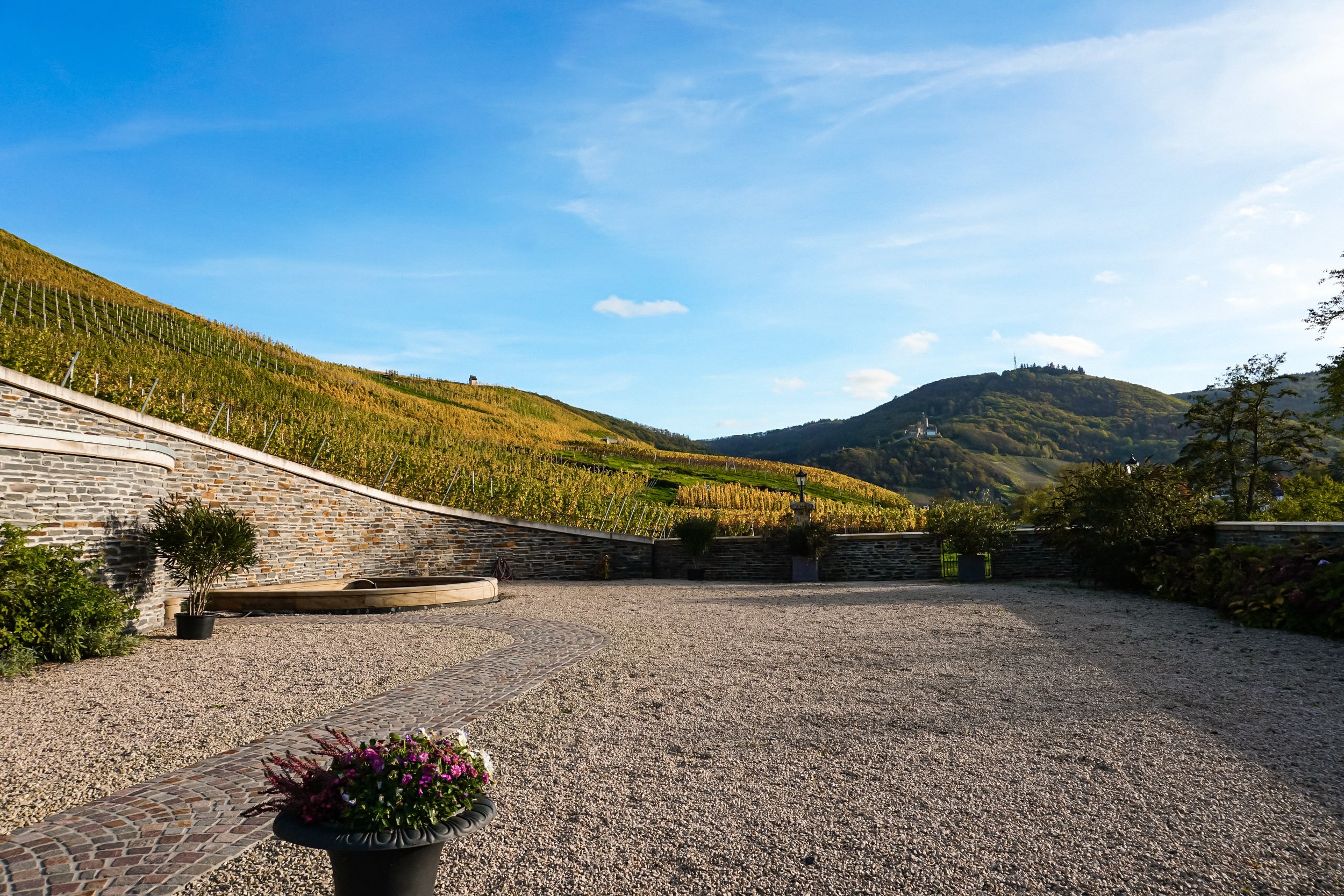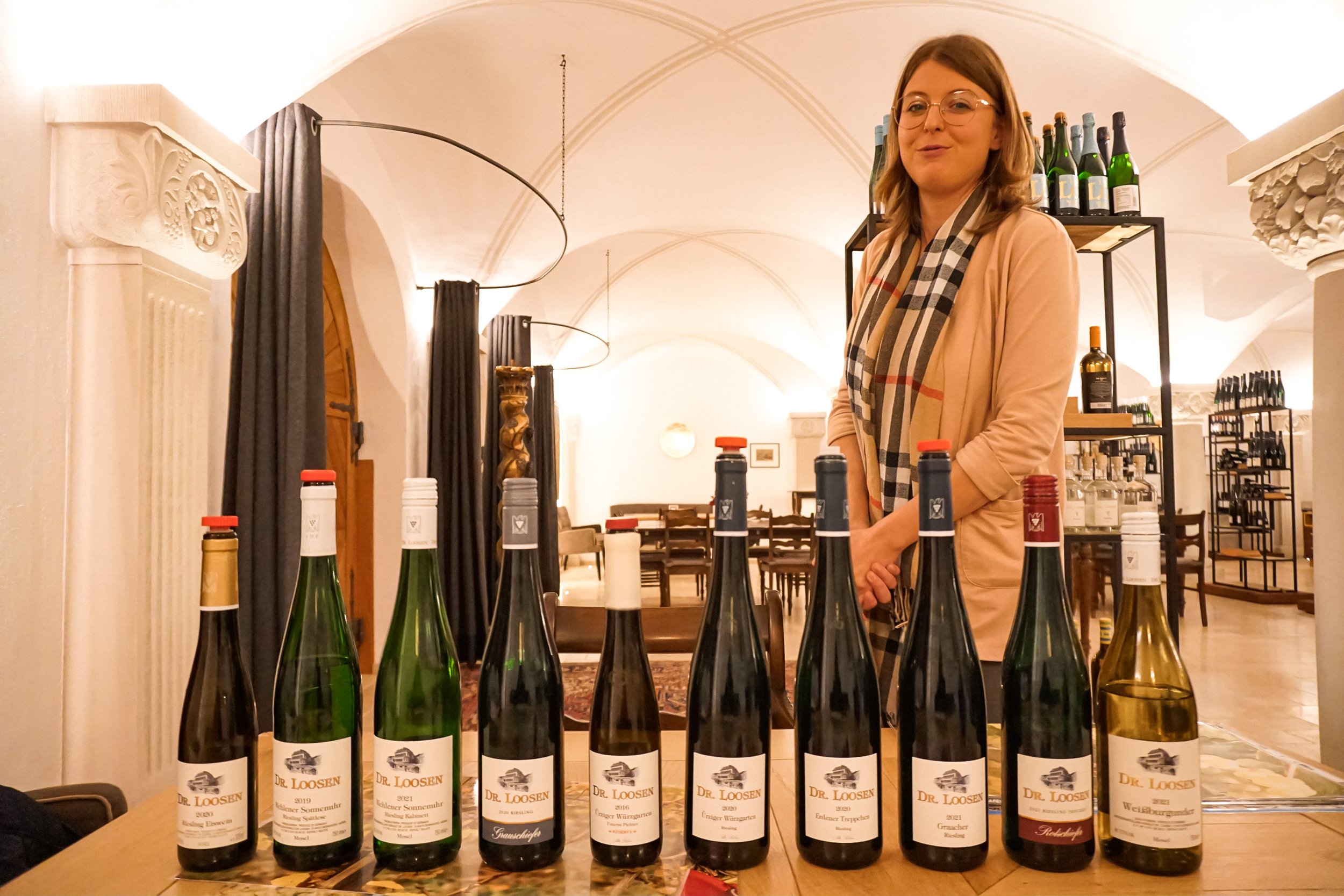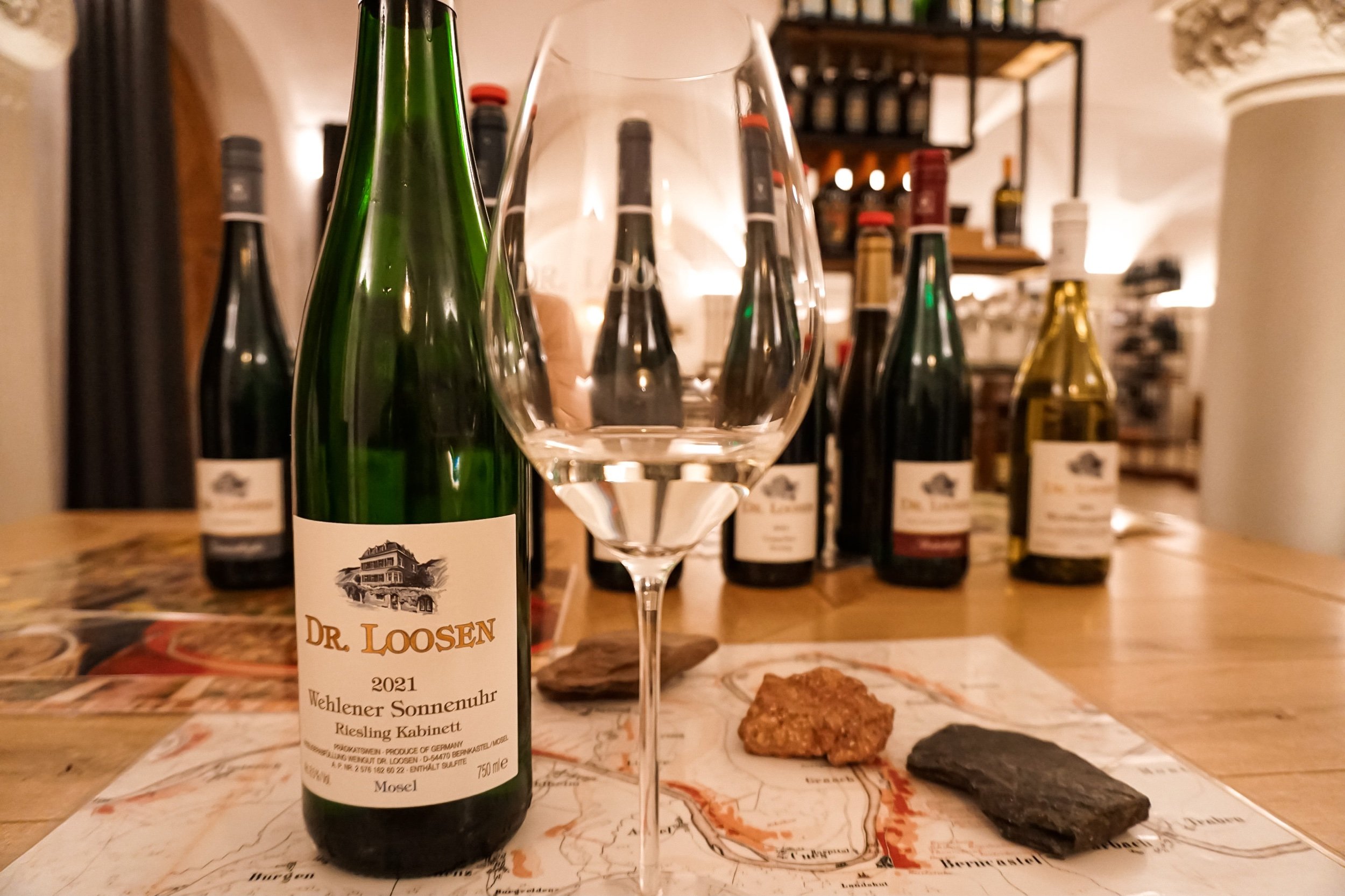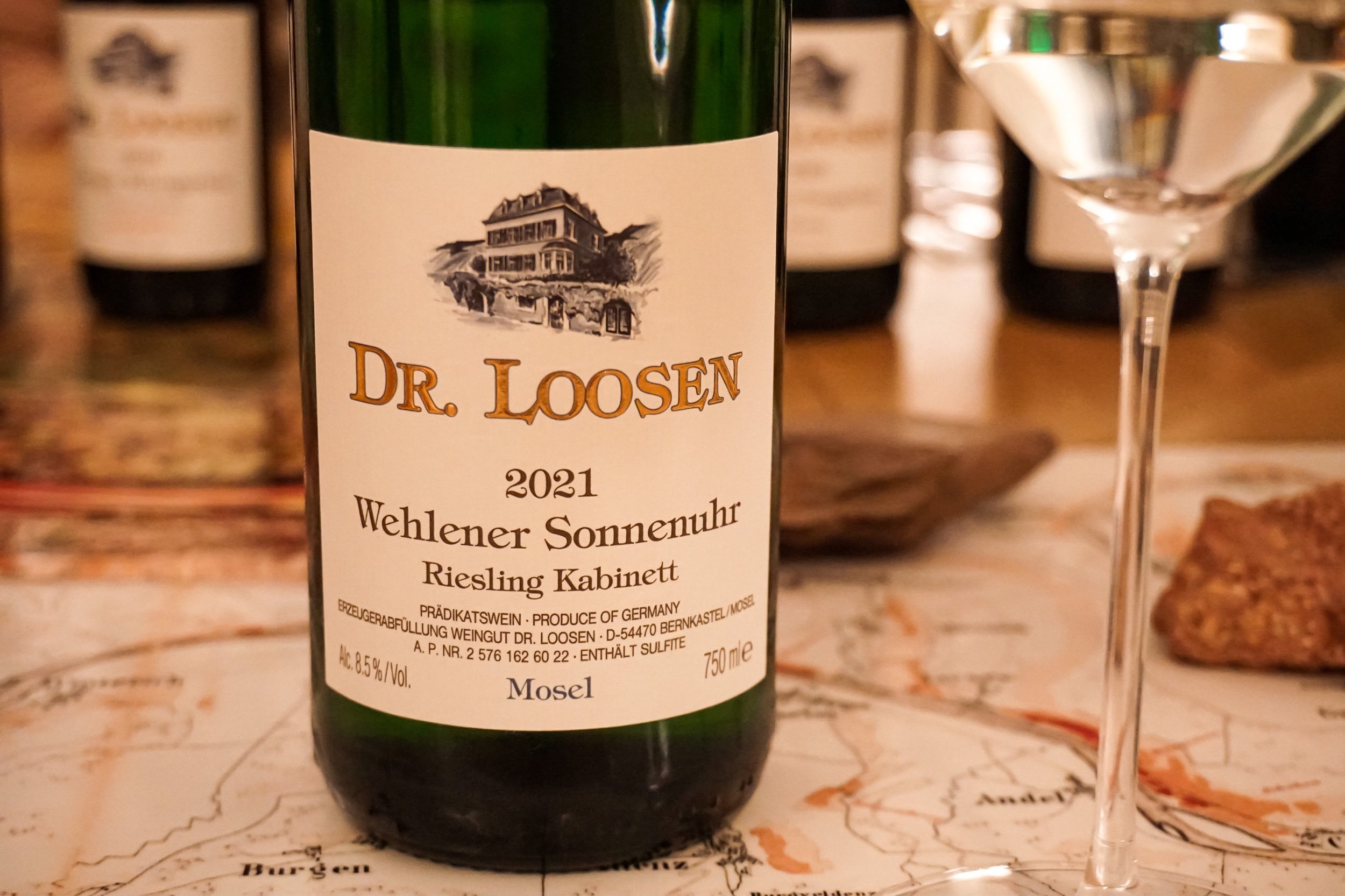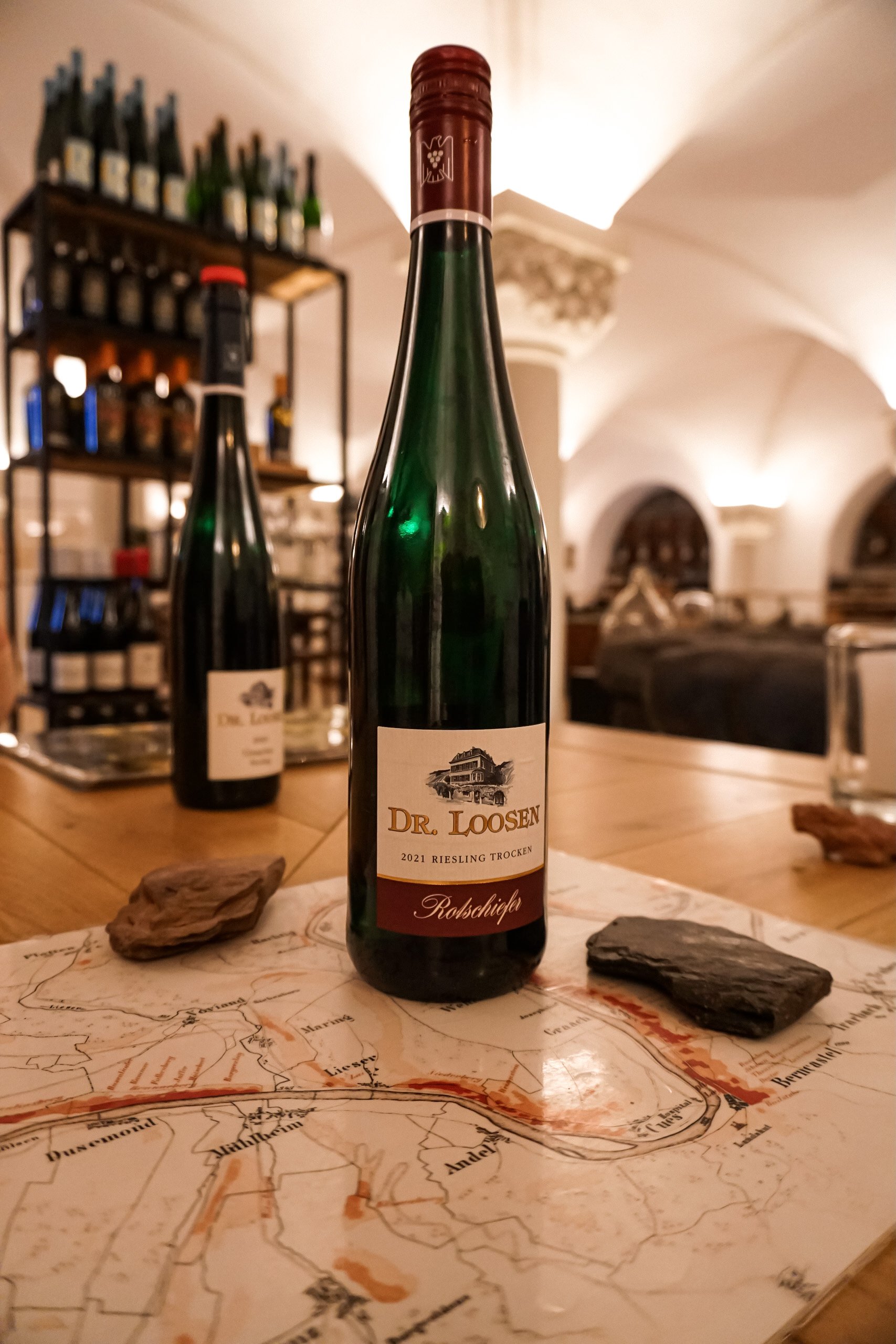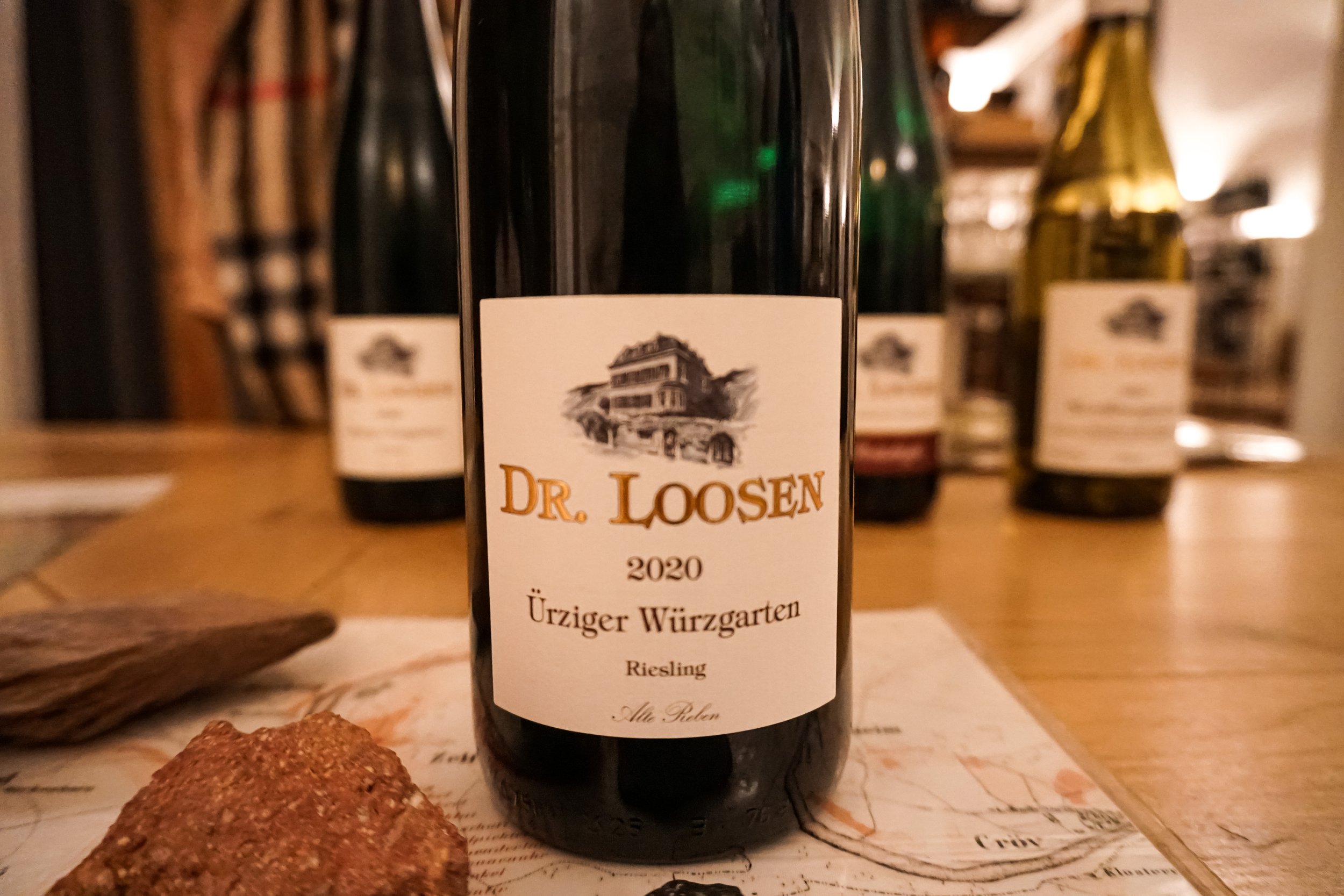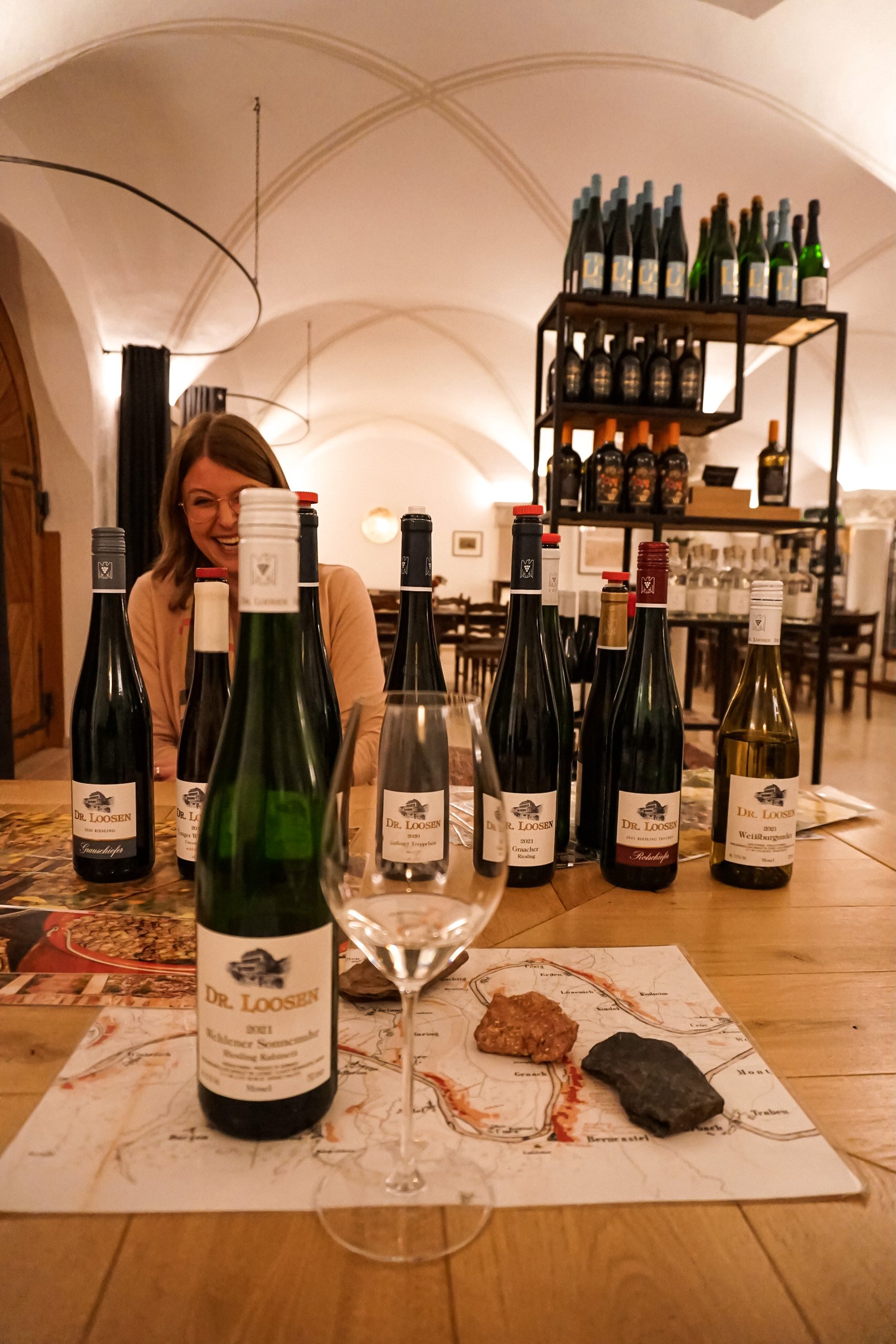Mosel. Dr. Loosen
Last fall I visited Mosel and my first stop was none other than the famous Dr. Loosen estate. Anne, who was my gracious host, started off by saying that “Ernie”, as the owner Doctor Ernst Loosen is called, is sadly not available and she will try to fill in the shoes. And she did a great job! The history of the estate goes back 200 years and Ernst is looking after it since 1988. The philosophy is simple – great wines are the reflection of soil, climate and grape variety. With the cool climate, steep, south-facing slopes and slate soil perfect for radiating the heat the wineries have all the tools they need to make special wines. Last but not least the area still upholds some ungrafted vines that are more than 100 years old!
The nasty phylloxera is not particularly fond of the slate soils which have a very good draining and hence maintaining original rootstock was still possible here and there. Dr. Loosen is a part of The Verband Deutscher Prädikatsweingüter VDP, a German organization which promotes the country's top wines and estates, since 1993 and currently holds two other wineries as well – one in Pfalz (Villa Wolf) and one in Oregon mostly for Pinot Noir. Anne said the estate is currently focusing on dry Rieslings more, but still maintaining the sweet wines in their portfolio. Sweet wines are sadly in decline and there are no two ways about it. Dr. Loosen feels they also need to showcase their mastery of dry wines because the consumers are well aware of their expertise regarding sweet wines. The current production between dry and sweet is split evenly.
In 80’ German wines did not have the best reputation. The wines were cheap, sweet and as Anne described it “best to get drunk with”. This philosophy was not the way to go – the cost of growing and cultivating vines on the steep slopes near Mosel greatly outweighed the income, making it very quickly financially unviable. When Ernst took over the first principle was to elevate the quality. Along his other famous colleagues (Fritz Haag, Egon Müller, Markus Molitor) Ernst was responsible for ensuring the rise of the reputation and quality of German wines and Mosel region particularly. 1989 was the turning point. The problem with the grape ripening started to be a story of the past and the influx of new blood into the industry advocating for showing the German terrorir changed the game.
The region is, as of 2022, still benefiting from the climate change. The ripening of the grapes is no longer an issue, but this doesn’t mean there are no problems arising. Climate became more extreme. Most recent vintages comparison reflects that clearly. 2021 was very extreme – lots of rain, cold weather, late harvest – more traditional with high acidity. Along came, of course, the disease pressure. 2022 in contrast was a year of intense heat and virtually no rain – approximately 10 litres of rain during 4 months. Obviously, the younger vineyards and vines are mostly in danger here as the root system is not yet that well established to look for the water deeper in the ground. While irrigation still seems like blasphemy in the region, Anne said this is something being discussed now although no decisions have been made. Eiswein is another example of an issue. Germany, well known for producing this style of wine, is quickly becoming too warm for it. Small wineries are already not even trying to make it, whereas Dr Loosen keeps the tradition and every year aims to produce it. Of course, this comes at a cost – each year the possibility of losing the grapes destined to become Eiswein is getting higher. The other hot topic is the ABV level and the harvest time is crucial to control it.
The tasting started off with Weissburgunder (Pinot Blanc) - which Anne called a “happy accident”. This is rather unusual since over 60% of the vines planted in Mosel belong to Riesling. The wine had a very floral aroma. That being said the Riesling is still very much on top and currently, while open to experiment, the winery stays true to the tradition and its roots.
The second wine was Riesling Wehlener Sonnenuhr Spatlase 2019. The name is translated to “Sundial” which sits at the very center of the vineyard. It is a popular sight in Mosel. This particular one is the second oldest in the region. High acidity, floral, lilac, aperitive wine. It is very easygoing – would pair with asparagus. While this is an entry-level wine it is definitely very important for the winery. The philosophy is to respect the entire portfolio – not only the most expensive labels. If you are not able to do this wine justice you shouldn’t even bother to go any further. But it does a wonderful job and most importantly it will not get you into a fight with your better half over dissecting it. That’s an extra point in my book. Actually, make it two. It is fully fermented in stainless steel – this is the only Riesling in the line-up that gets this reductive treatment. All others are matured in used oak barrels because Riesling is too sensitive for a new oak treatment.
Riesling Rotschiefer 2021 Trocken – first entry into the quality system. Dr. Loosen prepares two labels where they blend vines from the village and premier cru (following the Burgundian appellation system) into either blue or red slate labels. This one was the latter. The red slate used to be blue slate, however, due to the volcanic activities that took place in the past the blue slate was enriched with iron – turning it red. This explains the high minerality of the wine. It is metallic and the acidity is persistent. The nose is sweeter than the palate and there is a crushed rock sensation with spicy playfulness. Wine to enjoy on a terrace during summer. Around 5-6 g of residual sugar.
For all of the GG (Grosses Gewachs – Grand Cru) wines Dr. Loosen is only picking healthy and ripe grapes – no botrytis are allowed for these.
Erdener Treppchen 2020. The only village wine closed under cork in the range. On the nose you will find stone fruits, cut grass, herbs, spices and lemon. This one is from blue slate soil. A wine calling for food, preferably seafood. Grapes come from a very old (around 120 years old) and very steep vineyard and are obviously harvested by hand only. Wine is aged 12 months on full lees without batonage. Soy sauce sensation on the nose along with some blue cheese. Smooth and gripping acidity. Very creamy on the palate. Good as it is right now, but it desperately calls for more cellaring - keep it for at least 5 years. The usual residual sugar for the GG wines is 6g per liter.
Ürziger Würzgarten 2021 – it has unique soil, not red nor blue slate, but a volcanic conglomerate. 6 g of residual sugar per liter, 12,5% ABV and Ernie doesn’t want to cross this ABV mark. The name of the wine would be translated to Ürziger garden of spices, hence the spicy aromas in the wine. Anne told me there is a hypothesis that the name comes from the spice garden that used to be cultivated between the vine rows is highly unlikely. If that were the case every other vineyard would be called a vegetable garden for the simple reason that they used to grow vegetables there. Fortunately, this is not the case. Piercing acidity will ensure the glacial aging pace for this wine. Pleasant herbal aromas on the nose, especially thyme. Honeydew, melon and a greatly refreshing long finish. Amazing!
Ürziger Würzgarten 2016 Reserve – 24 months in oak barrels without batonage and then further 4 years of aging. The aromas are simply soaring from the glass: powerful but not heavy. This is the best part of the vineyard called Unterst Pichter. Floral notes, bee wax and slight petrol – not overpowering however. It is much sweeter on the nose than it is on the palate. Around 1000 bottles were produced.
Blauschiefer Riesling Feinherb – 9,5% ABV – easy drinking, weekend wine. Crowd pleaser. Very fruity and rather simple – the way it is meant to be.
Wehlener Sonnenuhr 2021 Kabinett – young wine under screw cap. The screw cap is a tale – Dr Loosen suggests to the customer to drink this young hence the screw cap. However you can also age it for a couple of years and no harm will come to it. It has moderate amount of sugar, low ABV and there is always plenty to go around. It is very sweet on the nose, with tropical fruits, peach, mango, and pineapple. It is like a cocktail without a high alcohol content. Anne called it “breakfast wine” – because of the 8,5% ABV. Kabinett wines are facing some difficulties nowadays due to climate change. It causes the grapes to ripen faster and accelerates sugar accumulation. As a result, the harvesting window is getting smaller and smaller for this type of wine. It is a mix of sweetness (apple and vanilla) on the palate and acidity on the finish with stony and smoky sensations.
Wehlener Sonnenuhr 2019 Spatelese – apple on the nose with great body and creaminess on the palate. Crushed stones, white flowers and slightly salty. Great mixture of maturity and precision.
2020 Riesling Eiswein – slightly young. Candied pineapple and apple again. This sticks to the glass and another sniff shows pretty peach aromas. It is getting harder and harder to produce it. For the grapes to be good for Eiswein the temperature has to be around -10 degrees for at least 3 to 4 days.
Anne – thank you for a lovely tasting and looking forward to seeing you next time! Also many thanks to Anna Gmurczyk, Wines of Germany Poland, for supporting my exploration of Mosel, my favourite German wine region. If you enjoy Rieslings as much as I do you definitely shouldn’t miss the upcoming 13th edition of the Riesling, Pinot & Co. 2023 on the 13th of April in Reduta Banku Polskiego in Warsaw.
